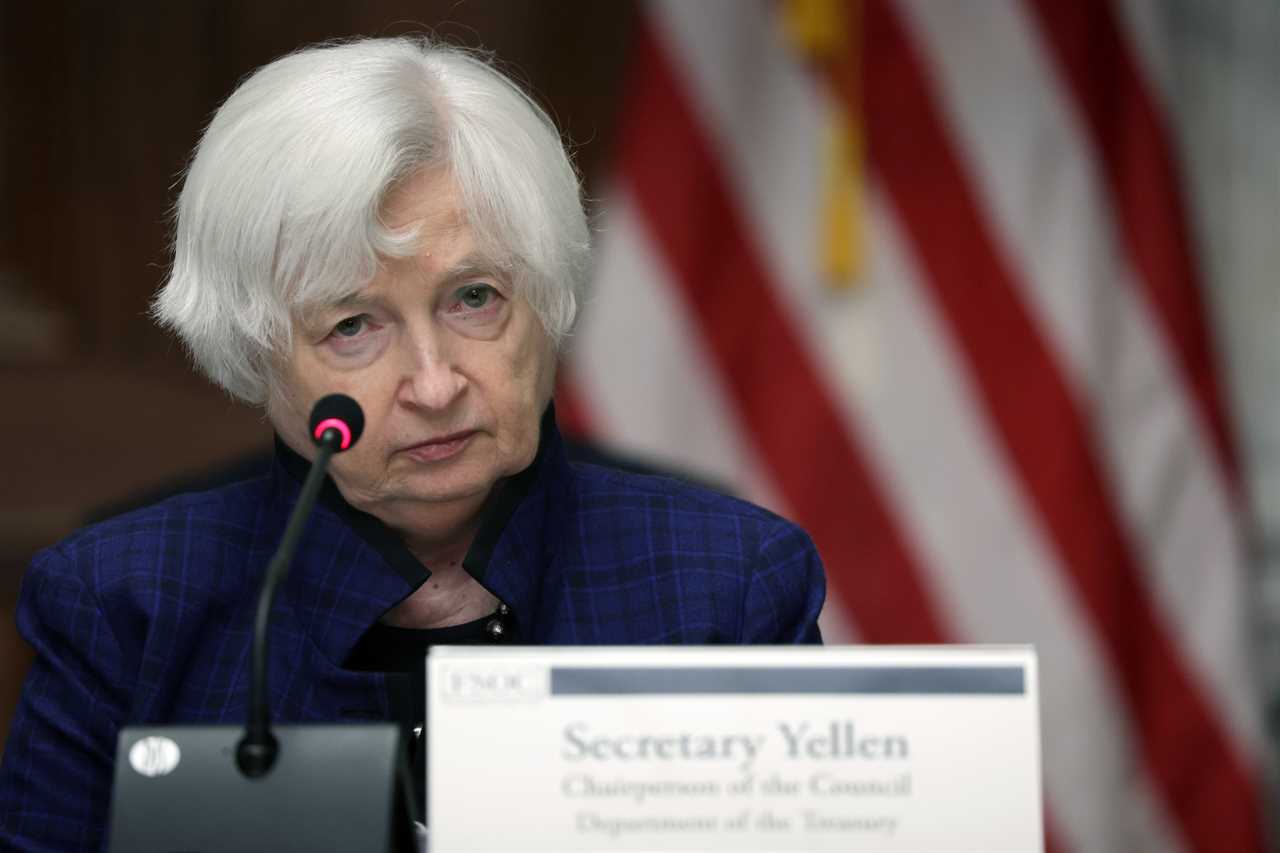
Yet another independent forecaster projects that the U.S. could slam into the debt ceiling as soon as early June — delivering its new, dire forecast hours before President Joe Biden and congressional leaders meet at the White House on Tuesday.
The Bipartisan Policy Center, a think tank that specializes in predicting the “X-date" for when the government officially can’t pay its bills, said Tuesday the U.S. could default on its $31.4 trillion debt between early June and early August. Its latest projection follows Treasury Secretary Janet Yellen's warning last week that the nation could run out of money as soon as June 1, dramatically shortening the timeline for lawmakers to lift the borrowing cap even as the two parties remain deeply at odds over how.
The BPC estimate piles further urgency onto Tuesday's debt limit meeting, despite slim prospects for a major breakthrough between Democrats insisting on a straightforward hike and Republicans pushing for major concessions in return for their debt votes. What remains unclear, though, is whether the Treasury Department can limp along paying the bills until June 15, when quarterly tax receipts would provide a cash infusion and likely stave off default through the end of next month.
If Treasury can hold off until the end of June, it would be able to tap into about $145 billion in new, one-time “extraordinary measures,” buying the government a little more borrowing power into the summer.
The coming weeks will offer more clarity about whether Treasury can make it to mid-June and give Congress and the White House some relief from the looming debt crisis, said Shai Akabas, BPC’s director of economic policy. If the country defaults on its debt for the first time in its history early next month, he added, payments to Social Security beneficiaries, Medicaid providers and federal salaries could all be at stake.
“I still don’t think now is the time for panic, but it’s certainly time to start getting concerned,” Akabas said, noting that Treasury “is skating on very thin ice” next month due to low cash flows.
The Treasury cash crunch that could cripple the U.S. economy in the coming weeks stems in part from a disappointing tax season, mixed with delayed tax filing deadlines for residents of states like California that sit in designated disaster areas, Akabas said.
Other estimates that point to a potential debt catastrophe in early June also underscore that considerable variability in the X-date will remain — until perhaps just days before the U.S. would officially default — thanks to the often unpredictable nature of federal cash flows.
After Yellen issued her warning last week, the independent Congressional Budget Office also said it sees “a significantly greater risk that the Treasury will run out of funds in early June.”
Mark Zandi, the chief economist for Moody’s Analytics, told senators during a Budget Committee hearing on Thursday that the X-date could fall on June 8. He added that Yellen’s early warning of June 1 is also very possible, as is a “best case scenario” of Aug. 8.
The distress signals from government and outside forecasters have done nothing to jumpstart talks between the White House, which is insisting on a “clean” debt limit increase, and Republicans, who are demanding spending cuts in exchange for lifting the borrowing cap. The Biden administration has refused to negotiate, vowing to keep government funding on a separate track.
A number of Republicans aren't feeling the pressure either, viewing Yellen’s early June projection as nothing more than a political ploy aimed at squeezing the GOP to swallow a clean debt hike. Akabas said Yellen’s warning is consistent with how the Bipartisan Policy Center is analyzing the situation, however, noting that “no risk is too small a risk to flag.”
“Yeah, I don’t think she’s playing games,” Zandi concurred in an interview last week.
Experts say that financial markets are starting to signal trouble ahead amid the debt standoff, particularly among yields in short-term Treasury securities, and that those cracks will only start to worsen as the country lurches closer to the limit. The U.S. is also at risk of another credit rating downgrade, a painful consequence of the debt ceiling standoff that gripped Washington more than a decade ago.
Pressure from the markets is what may ultimately force action, Zandi said.
“I don’t think lawmakers will act until they’re pushed to act by the stock market and the bond market saying, ‘If you guys don’t, this is what’s going to happen'," Zandi said. "There’s going to be a lot of red on the screen, a lot of 401Ks are going to be diminished and there’s going to be a lot of angry people."
----------------------------------------
By: Caitlin Emma
Title: A new, dire debt warning: U.S. could breach limit in early June
Sourced From: www.politico.com/news/2023/05/09/debt-limit-white-house-00095867
Published Date: Tue, 09 May 2023 04:00:00 EST






